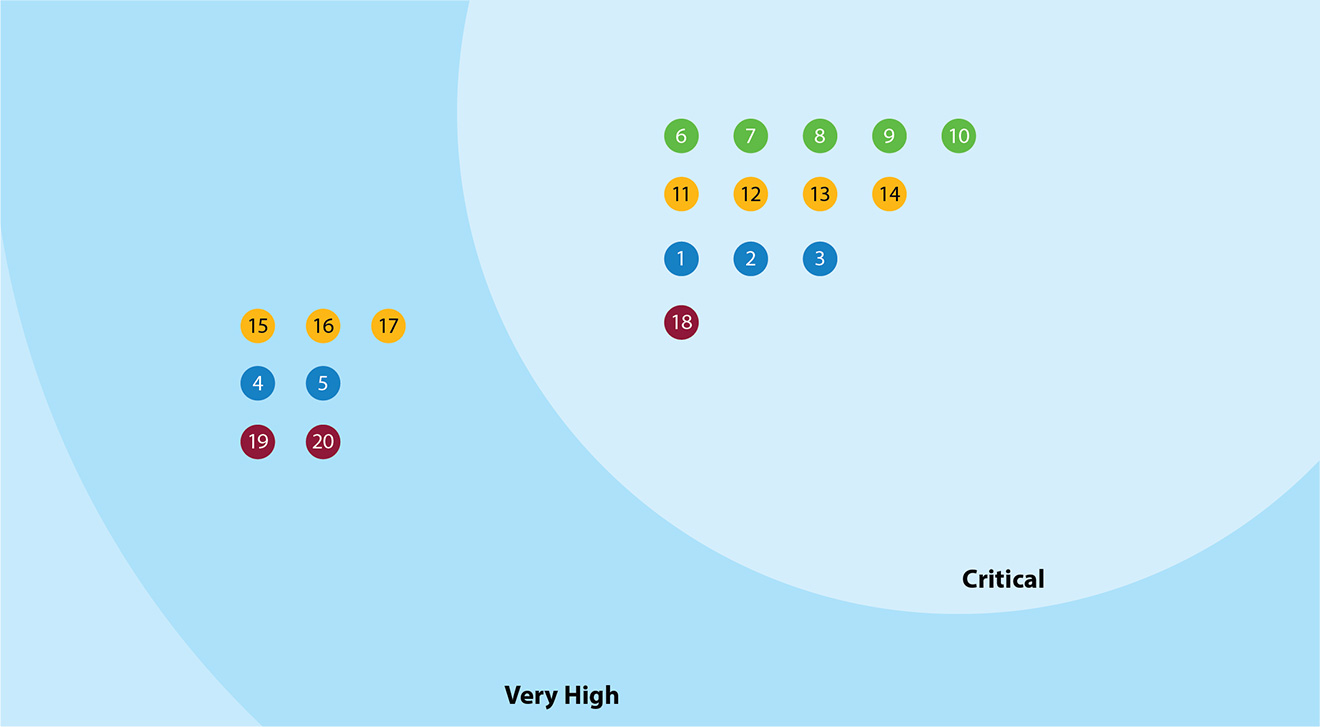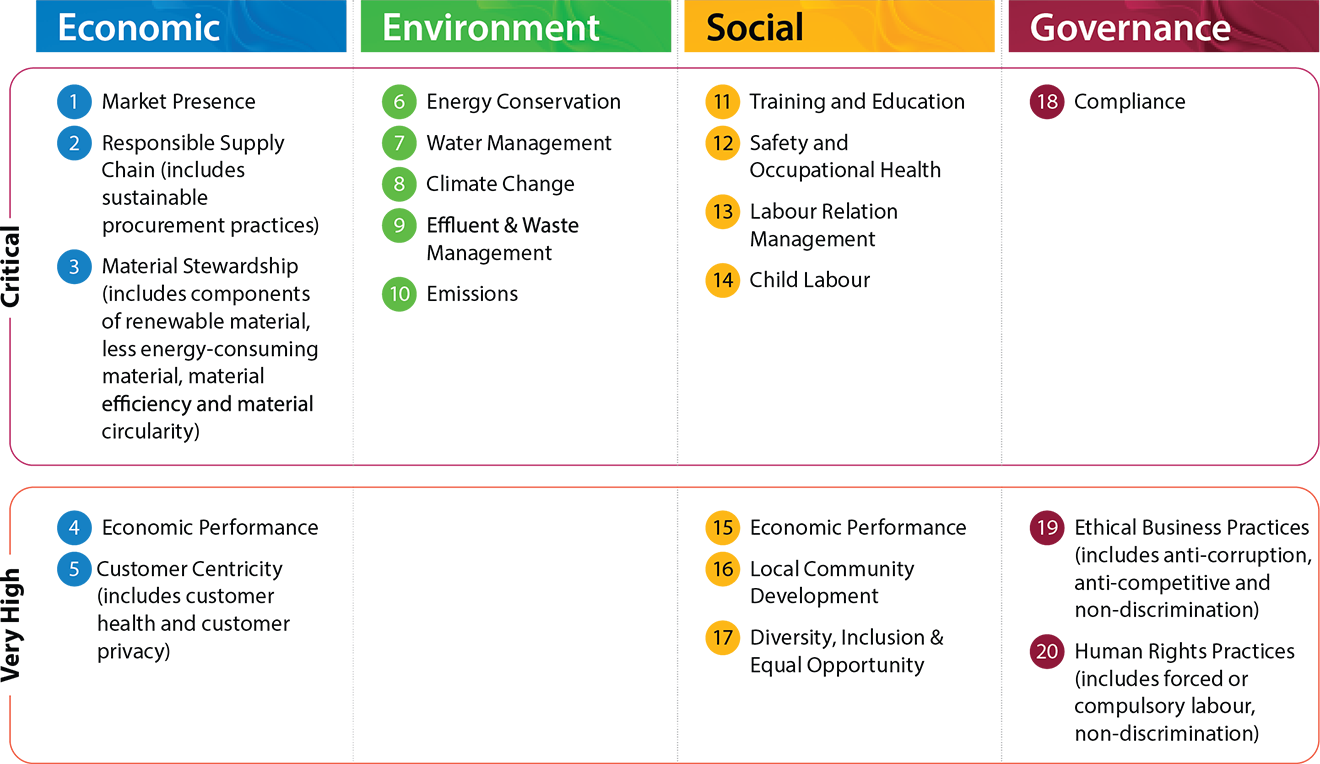

Materiality
We identify and recognise material topics based on a systematic analysis of numerous issues and concerns highlighted by our internal and external Stakeholders. Systematic identification of material ESG topics guarantees that relevant material topics for our business and Stakeholders are addressed.
Approach to Materiality Assessment
We revalidate our material issues once every three years. In FY 2021-22, we conducted a fresh independent material assessment of key issues, risks, opportunities and potential concerns to facilitate the decision-making process. Our stakeholder engagement process helps determine whether our chosen strategies and plans have achieved the intended goals and whether we need to change course and find alternative means of addressing these concerns.
Multi-functional discussion was held to identify the Stakeholders who would be involved in the materiality evaluation. Based on this activity, the major Stakeholders to be included in the stakeholder engagement process, as well as the criteria to be used in selecting an acceptable stakeholder size, were selected.
The Global Reporting Initiative (GRI) criteria were used to identify the topics for stakeholder engagement. The stakeholder engagement questions were designed with two criteria in mind: relevance and impact. The first query focused on the topic’s importance to the stakeholder and its reason for relevance. The second question was on the topic’s predicted impact on TML based on the perceived likelihood of occurrence, size of impact and type of impact. All replies were asked on a scale of 1-5, with 1 representing extremely low and 5 representing very high, or on pre-defined non-numeric drop-down response alternatives.
During the stakeholder engagement, internal
and external Stakeholders offered feedback.
Structured stakeholder involvement was
carried out using
excel-based forms and
online questionnaires. Structured telephone
input was obtained from Independent
Directors and an in-person conversation with
the Managing Director also aided the overall
assessment outcome.

